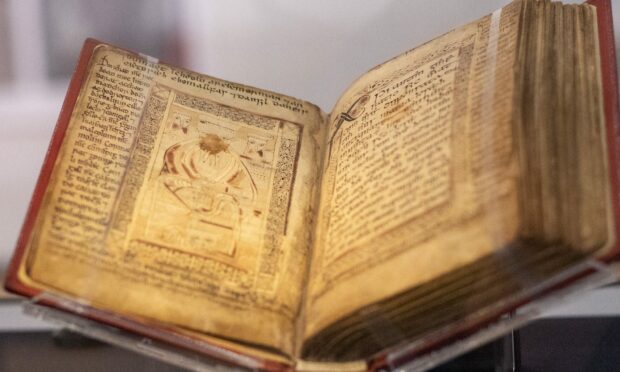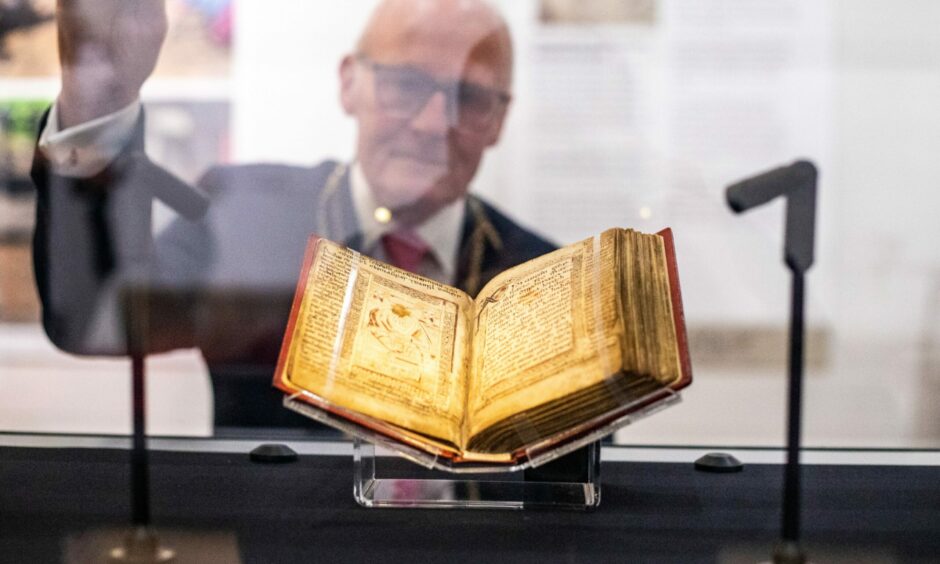Aberdeenshire councillors have voted against plans to return the ancient Book of Deer back to its “rightful home” for good.
Earlier today councillor Glen Reid moved a motion at full council that would have seen steps taken to keep the historic manuscript in the north-east.
He acknowledged the “cultural significance” of the book and deemed it as “one of this country’s greatest treasures”.
His motion asked for council chiefs to write to the Cambridge University Library – where the book has been kept since 1715.
Mr Reid argued that the “expertise to research and preserve” the ancient text is here in Aberdeenshire.
What is the Book of Deer?
The 10th Century manuscript is believed to feature the oldest pieces of Gaelic writing to have survived from early Medieval Scotland.
It contains text and illustrations referring to the Monastery of Deer where the book is believed to have originated from.
Councillor Reid also acknowledged the “dedicated” work of the Book of Deer Project.
The community-led heritage group was started up in 1997 with a mission to make the manuscript more accessible to the wider public.
The group has organised a number of archaeological digs over the years searching for the Monastery of Deer.
Mr Reid told members he had contacted the Book of Deer Project a couple of years ago about the manuscript’s possible return.
‘Remarkable breach of trust’
But councillor Marian Ewenson moved an amendment asking the council to simply thank the university for loaning the book.
She said it would be a “remarkable breach of trust” for the council to ask for the book to stay after efforts to make the loan possible and would “overshadow” the opportunity to hold the display.
Ms Ewenson added: “You don’t loan something to somebody and then suggest that you don’t hand it back.
“There may be discussions way ahead in the future but this is not the time.”
After going to a vote 41 councillors backed the amendment while 24 opted for the motion.
What do you think of the decision? Share your views in our comments section at the foot of this article
Historic Book of Deer returned home for the summer
The Book of Deer has been on display at Aberdeen Art Gallery since July.
It has been more than 1,000 years since the book was last in the north-east.
But anyone wishing to see the historic text will have until Sunday (October 2) to check it out before it returns to Cambridge.
The Book of Deer Project managed to secure nearly £130,000 to bring the manuscript back to Scotland.



Conversation